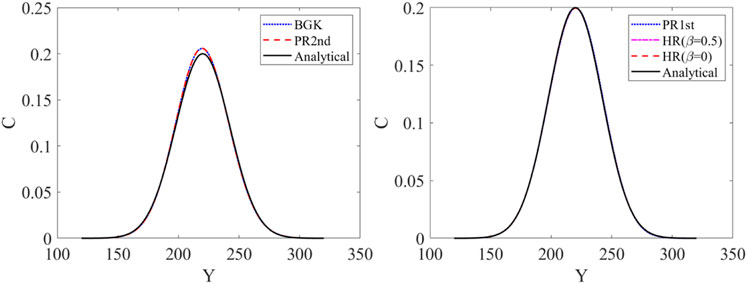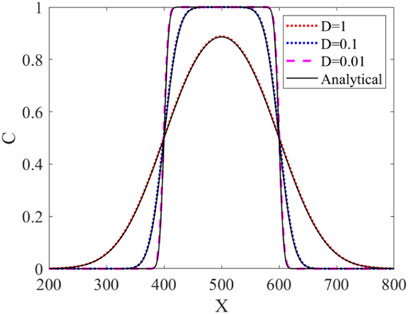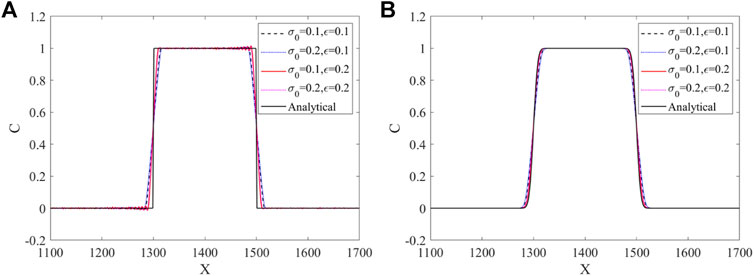- 1School of Energy and Power Engineering, Beihang University, Beijing, China
- 2Aero Engine Academic of China, Beijing, China
In multi-component flow and/or thermal flows, when the diffusion coefficient of the advection–diffusion equation is relatively small, the relaxation coefficient in the lattice Boltzmann method will be close to 0.5, which will lead to numerical instability. The stability conditions will become more severe, when there are high gradient regions in the computational domain. In order to improve the stability of advection–diffusion lattice Boltzmann method to simulate scalar transport in complex flow, a hybrid regularized collision operators and a dynamic filtering method which is suitable for the convection-diffusion lattice Boltzmann method are proposed in this paper. The advection–diffusion lattice Boltzmann method is first tested in uniform flow with smooth and discontinuous initial conditions. Then the scalar transport in doubly periodic shear layer flow is tested, which is sensitive to numerical stability. The adaptive dynamic filtering method is also tested. The results are compared to the classical finite difference method and to the lattice Boltzmann method using the projection-based regularized and standard Bahtnagar-Gross-Krook collision operator. The results show that the hybrid regularized collision operator has advantages in simulating the scalar advection-diffusion problem with small diffusion coefficient. In addition, the adaptive filtering method can also improve the numerical stability of the lattice Boltzmann method with limited numerical dissipation.
1 Introduction
Species transport and heat transfer flows are widely present in real-world systems with complicated geometry (gas turbines, burners, furnaces, and so on), and accurate numerical simulation of these processes is key to initial design. The governing equations consist of three main components: (a) Navier–Stokes equations for the fluid, (b) heat transport equation and (c) a set of transport equations for the species. Conventional numerical methods for solving these equations include finite difference methods, finite volume methods, and finite element methods. Although initially developed to solve the Navier–Stokes (NS) equation, lattice Boltzmann method have been extended to a variety of applications and flows [1–3]. The local nature of the time evolution of the LBM helps to simplify the numerical coding process, improve the parallel scalability of the algorithm, and make the implementation of the complex boundary conditions straightforward. The disadvantage of LBM is that as the number of lattice velocity sets increases, more memory storage will be required. Despite the latter issue, the lattice Boltzmann method has emerged as a potential alternative for simulating a range of complex flows throughout the last decade.
The advection-diffusion or passive scalar LBM is widely used in the literature, especially under the assumption of incompressible flow [4–6]. In this approach, the LBM flow solver is used to model the conservation of mass and momentum, while the temperature and species fields were handled using other sets of distribution functions. And it is assumed that the species and temperature distribution have little effect on the density, so the effect of species and temperature changes on the flow can be reflected by adding body force terms in the LBM flow solver. Hosseini [7, 8] modified the classical advection-diffusion LBM, which can consider the effects of the changes of thermophysical parameters and transport coefficients, and used the modified LBM to simulate the reacting flows with detailed thermo-chemical models.
However, when the relaxation factor in LBM is very close to 0.5, it is easy to cause instability. The origin of LBM instability has been actively studied and remains an open topic [9, 10]. An extension of the von Neumann linear analysis showed that modal interactions due to the error in the time and space discretization can lead to severe linear instabilities [11]. A linear perturbative analysis methodology has been proposed to study the stability properties of the isothermal discrete velocity Boltzmann equations using the Knudsen number as parameter [12]. Linear stability analysis of isothermal lattice Boltzmann methods has been carried out to investigate the impact of the collision model on numerical stability [13–16]. The modal couplings depending on the exact value of the relaxation time, mean flow quantities, or even mesh resolution can appear and make a perfectly stable wave become unstable. For the compressible thermal flow, a spectral study of the compressible hybrid lattice Boltzmann method on standard lattice has been proposed to study the effect of the choice of numerical parameters on computational stability [17]. Suga [18] performed a linear stability analysis of the two-dimensional LBM for advection-diffusion equation and derived stable regions for different dimensionless relaxation coefficients. Hosseini [19] used the von Neumann method to analyze the stability of the LBM for advection-diffusion equation, and investigated the effects of different distribution functions and different parameters such as lattice sound velocity on the stability region. The main consequence of the LBM instability is to create numerical oscillations during the simulation, which are mainly characterized by high-frequency waves propagating throughout the computational domain. The numerical instability become more severe when discontinuous initial conditions, inappropriate boundary conditions, or high gradient regions exist in the computational domain. In order to expand the stability region of LBM, various theoretical methods have been proposed, including: multiple relaxation times [20], regularization techniques [21], entropic models [22].
Compared with the method of theoretically modifying the LBM, other studies use filtering methods to improve the stability of the calculation. The filtering methodology has already been extensively discussed for fluid flow simulations based on LBM, including static [23, 24] and adaptive filtering strategies [25, 26]. Ricot [23] proposed a high-order spatial filter to stabilize the LBM by increasing the dissipation in the high wavenumber range where the instabilities occur. However, the use of high-order filters will increase the stencil of LBM and reduce computational efficiency. Marié [26] et al. proposed a dynamical adaptive filtering method to improve stability of LBM. In this method, the filter coefficients depend on the local shear stress, which can improve the computational stability without introducing excessive numerical dissipation. Moreover, the dynamical filtering strategy can work with low-order stencil, which is consistent with the LBM.
In this paper, the advection–diffusion lattice Boltzmann method is first tested in uniform flow with smooth and discontinuous initial conditions. In order to test the ability of advection-diffusion LBM in simulating scalar transport problems in complex flow, we use the scalar transport in doubly periodic shear layer flow as an example to compare the results of advection-diffusion LBM using different collision operators respectively. These collision operators are the projection based regularized collision operator, classical BGK collision operator and the hybrid regularized collision operator. Further, the effect of using dynamic filtering method to improve the stability of advection-diffusion LBM is explored. In this filtering method, the gradient of the transport scalar is selected as the sensitive variable. In the region with smooth variable distribution, the intensity coefficient of the filter is small to avoid introducing too much artificial dissipation, while in the region with large gradient distribution or discontinuity, the intensity coefficient of the filter is large to suppress the development of numerical oscillation.
The rest of the paper is organized as follows. A brief presentation of the LBM is given in Section 2. The filtering strategy is described in Section 3. The results of the scalar transport in uniform flow and doubly periodic shear layer flow obtained with the numerical method are presented in Section 4. Finally, a brief conclusion is given.
2 Lattice Boltzmann Model
In the context of the present study a weakly compressible 2-D recursive regularization lattice model has been used as the flow field solver. The same grid structure and spacing is used for passive scalar fields.
2.1 LBM for the Flow Field
With the initial solution simply defined by initial macroscopic fields
Step 1. : Equilibrium constructionConsidering the fourth order Hermite expansion of Maxwell-Boltzmann distribution, one can obtain the equilibrium distribution function [27].
where
The Hermite polynomials read
The third-order Hermite polynomials supported by the D2Q9 basis are
Step 2. : Force constructionThe forcing population is extended to second order [28, 29],
with its Hermite moments defined as
with
Step 3. : Non-equilibrium constructionUsing the BGK collision operator, the non-equilibrium distribution function is obtained as:
However, when the relaxation factor of the BGK form of the LBM model is close to the critical value, the accuracy will be reduced. The use of regularized collision operators can effectively broaden the application range of the LBM model. For simulating isothermal flow with standard D2Q9 model, the recursive regularization collision operator with the third-order Hermite expansion [30] can obtain stable result, the non-equilibrium distribution function is obtained as:
where the second order moment of the non-equilibrium distribution function is
Step 4. : Collision processWith the equilibrium distribution function
It should be noted that the prefactor commonly used with Guo’s forcing methodology [28], i.e., (1 − ∆t/2τ), is modified to ∆t/2 because discrete effects are accounted for in the definition of the second-order non-equilibrium contribution (Eq. 11).The relationship between the relaxation time
Step 5. : Streaming processTransport the distribution to neighbouring nodes according to
Step 6. : Update macroscopic variablesThe density
2.2 LBM for the Scalar Field
For a scalar field
where
The advection–diffusion LBM is based on the following space–time evolution equation for the distribution function:
where the first item on the right-hand side is the collision source item. The prefactor (1 − ∆t/2τg) was proposed by Guo et al. to reduce discrete effect issues [28]. For the collision operator in the form of BGK:
The second item on the right-hand side of Eq. 17 is the source term used to correct the error caused by the convection term [31]:
The time derivative is computed by first-order Euler method.
The relationship between the relaxation time
Given the reduced number of moments conserved in the advection–diffusion model and absence of non-linear velocity terms in the target macroscopic equation, the equilibrium distribution function can be truncated at first order
The D2Q9 model is also used to solve the scalar transport process in this paper, because it is more robust and accurate than the D2Q4 or D2Q5 model when the convection is strong. The specific values of its lattice parameters are shown in the previous section.
The advection–diffusion LBM algorithm is divided into two parts: collision process and streaming process.
The collision process is:
Among them,
The streaming process reads:
When the distribution function after streaming process is obtained, the scalar value of the next time step can be obtained from:
Both the BGK form and the regularized form of collision operators can recover the correct macroscopic convection-diffusion Eq. 16. The main idea of regularized method is to reconstruct the off-equilibrium distribution before the collision step [32, 33]. By using the Hermite polynomial to expand the off-equilibrium distribution, the off-equilibrium distribution reads:
where the sum begins at
For the regularization model based on direct projection (denoted PR-LBM), the first-order expansion coefficient
The second order expansion coefficient
In this paper, the collision operator based on first-order direct projection is denoted PR1st, and the collision operator based on second-order direct projection is denoted PR2nd.
Similar to the use of finite difference for the reconstruction of the non-equilibrium part in the flow field LBM [35, 36], the first-order expansion coefficient
This term is assessed via the finite difference method (hence the FD subscript). Here, we using the second-order centered finite differences scheme to compute the gradient term
A hybrid regularization method that was developed for the fluid dynamics was proposed by Jacob et al. [38]. In this model, the off-equilibrium coefficients are evaluated by combining two different approximations. The first approximation is direct projection of the off-equilibrium and the second approximation is computed by finite difference method as to the best approximate the viscous tensor. As shown in their article, excellent numerical stability is obtained by using the hybrid regularization collision model.
In this work, inspired by the hybrid regularization method [38] developed for the fluid dynamics, we propose a hybrid regularization procedure for the convection-diffusion LBM.
The adjustment factor
where
3 Dynamical Spatial Filters
The so-called filtering is actually smoothing the known discrete function in a given way, thereby filtering out high-frequency oscillation waves. The general expression of the filtering method can be written as:
where
The traditional filtering method is carried out for the variables in the macroscopic equation. For the LBM, since its evolution process is based on the distribution function, in addition to filtering the macroscopic variables, the distribution function or the collision operator can also be filtered. However, to filter the distribution function or the collision operator, each discrete velocity needs to be filtered once. In order to reduce the computational cost, this paper studies the effect of filtering macroscopic variables on the stability and accuracy of LBM. The LBM algorithm for filtering macroscopic variables is: firstly, by performing the standard collision and streaming process, a new distribution function is obtained, and then the macroscopic variables are calculated by Eq. 24. At last, the resulting macroscopic variables are filtered using Eq. 29.
In this paper, we consider a dynamic filtering method applicable to the scalar convection-diffusion equation. The dynamic computation of the filter coefficient is directly inspired from the work by Marié et al. [26] in which
where
The estimation of the reference value for the magnitude of the gradient
4 Results and Discussion
4.1 Advection–Diffusion in Uniform Flow
At first, we performed simple advection–diffusion numerical experiments in uniform flow with smooth and discontinuous initial conditions to evaluate the scheme. We use the BGK, PR1st, PR2nd and the HR collision operators.
4.1.1 Advection-Diffusion of a Gaussian Hill
Here, the advective-diffusion process of the Gaussian hill is used to test the scalar field LBM. The filtering strategy is not used in this test. The initial concentration profile is taken as:
where
with
To avoid the contribution of the boundary conditions, the computation takes place in a periodic domain with
We will use the L2 error norm to quantitatively study the calculation accuracy of the model. Given the reference quantity
The sum runs over the entire spatial domain where
Figure 1 shows the concentration profile for
4.1.2 Advection-Diffusion of a Rectangular Pulse
In order to test the scalar field LBM with discontinuous initial condition problems, the one-dimensional advection-diffusion of a rectangular pulse is simulated in this section. The simulations are carried out using four different collision operators, BGK, PR1st, PR2nd and HR. Firstly, we make the test without using the filtering method.
The initial rectangular pulse is described as:
where
Here,
When the diffusion coefficient of the convection-diffusion equation is relatively large, even if the initial flow field has discontinuous distribution, the discontinuity will become smooth due to the strong dissipation effect of the equation itself. We first take the diffusion coefficient
If the diffusion coefficient of the convection-diffusion equation is relatively small, when the initial condition has discontinuous, due to the small dissipation effect of the equation itself, oscillation will occur near the discontinuity. In this example, we choose diffusion coefficient
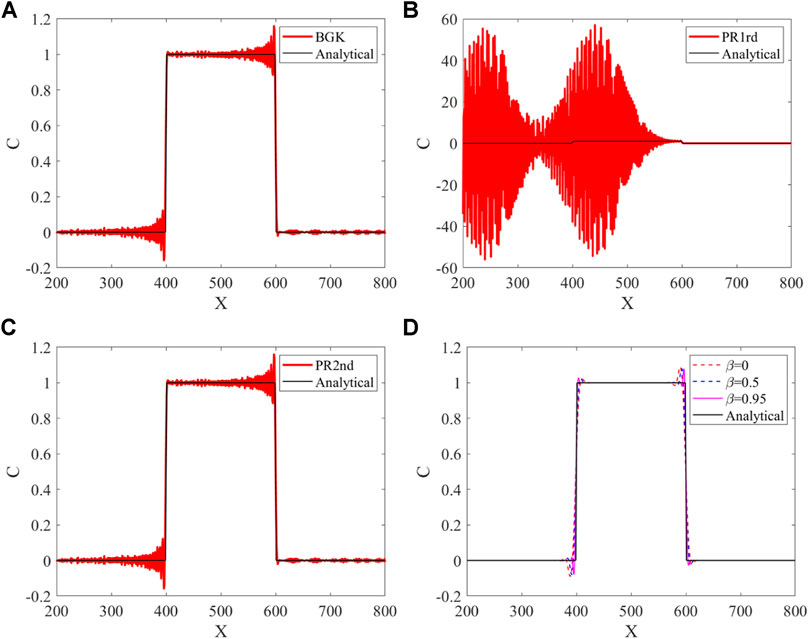
FIGURE 4. Scalar distribution profile for
In order to investigate the influence of the filtering strategy and choose the proper values of
4.2 Advection-Diffusion in Doubly Periodic Shear Layer Flow
To show the ability of the advection–diffusion LBM and the filtering method, we used a simple test: the scalar transport in doubly periodic shear layer flow. It is a well-known test case which allows to quantify the stability of numerical schemes as a first step [9]. This flow is composed of two longitudinal shear layers, located at
The initial conditions are fully defined through
where
4.2.1 Validation of the Velocity Field
In order to validate the flow-field, we successively simulated the rollup of the double shear layer. Both the BGK and the recursive regularization collision operator are used.
Figure 7 presents dimensionless vorticity contours

FIGURE 7. Vorticity contours in the double shear layer, for different grids with the BGK collision model. From left to right: 128 × 128, 256 × 256, and 512 × 512.
Figure 8 presents dimensionless vorticity contours obtained with the recursive regularization collision operator after one convective time period

FIGURE 8. Vorticity contours in the double shear layer, for different grids with the recursive regularization collision model. From left to right: 64 × 64, 128 × 128, and 256 × 256.
Furthermore, we compare the velocity fields obtained under the third order and fourth order equilibrium distribution function expansions. The result is given in Figure 9. We can see that the difference between the velocity fields obtained from the third and fourth order expansions is very small.
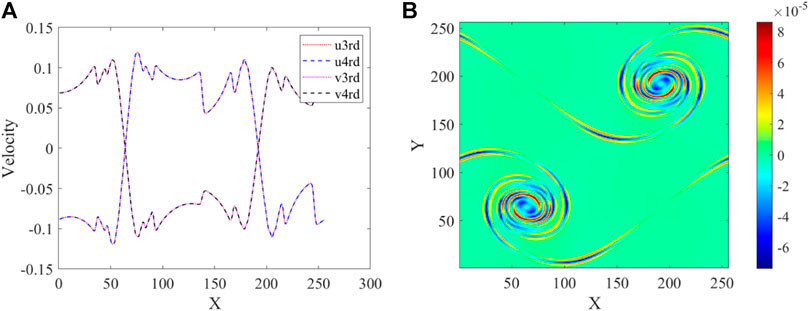
FIGURE 9. Comparison of velocity fields obtained by the third and fourth order expansion of the equilibrium distribution function: (A) velocity profiles along the diagonal lines, (B) contour of the velocity difference.
4.2.2 Tests of Advection-Diffusion of Scalar
In this subsection, the passive scalar transport problem in periodic double shear layer is studied. Because the results obtained by the PR2nd and the BGK are similar, we only give the results of BGK. At first, to better understand the stability of the proposed schemes, the minimum number of grids required for three LBM collision operators that can obtain stable result for different Péclet number are investigated. The flow evolution was simulated up to
In the following parts of this section, the passive scalar transport problem in periodic double shear layer is studied in detail with two specific Péclet numbers. The computation grid is 256 × 256, and the velocity field is computed by recursively regularized LBM. The scalar transport equation is solved by using the advection-diffusion LBM with the three collision operators BGK, PR1st and HR respectively. We examine both the medium and extremely large Péclet number regimes.
For comparison, the solution obtained with a classical finite-difference solver is also given. The LBM and FD solver use the same time-step, and first order forward Euler integration is used. Second order central difference operator is used for convection and diffusion.
Since the analytical solution is not available, we take the unfiltered BGK collision operator for a well resolved grid (1024 × 1024) as the reference solution.
4.2.2.1 Test Case With Medium Diffusion Coefficient
First, we consider the case where the equation itself has a medium diffusion coefficient. Here, the diffusion coefficient
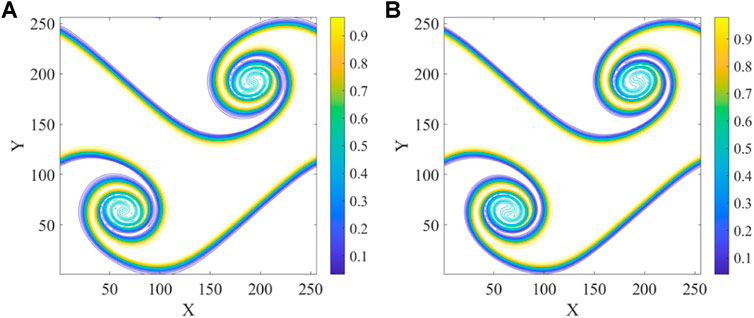
FIGURE 10. Scalar concentration contour plot in the double shear layer at

FIGURE 11. Scalar distribution profile at
Next, we consider the effect of using the filtering method on the FD scheme and LBM. Here, because the results of the three collision operators are basically the same, only the HR collision operator is selected as the representative of the LBM. Figure 11B presents a comparison of the scalar distribution along the counter-diagonal of the computational domain with and without the filter. It can be seen that for the example with a relatively large diffusion coefficient, the results using the filtering method are basically consistent with the results without filtering. The adaptive filtering method does not bring significant numerical dissipation.
For a quantitative measure of the error of HR model with and without the filter, the scalar distribution along the counter-diagonal of the computational domain against a reference solution is compared. The L2 error of the unfiltered HR model is
Figure 12 shows the filter coefficients contour plot and the distribution profile along the counter-diagonal of the computational domain after using the filter with the FD method and the HR collision operator. We can see the results of the two schemes are basically consistent, and both show good adaptive filtering characteristics.
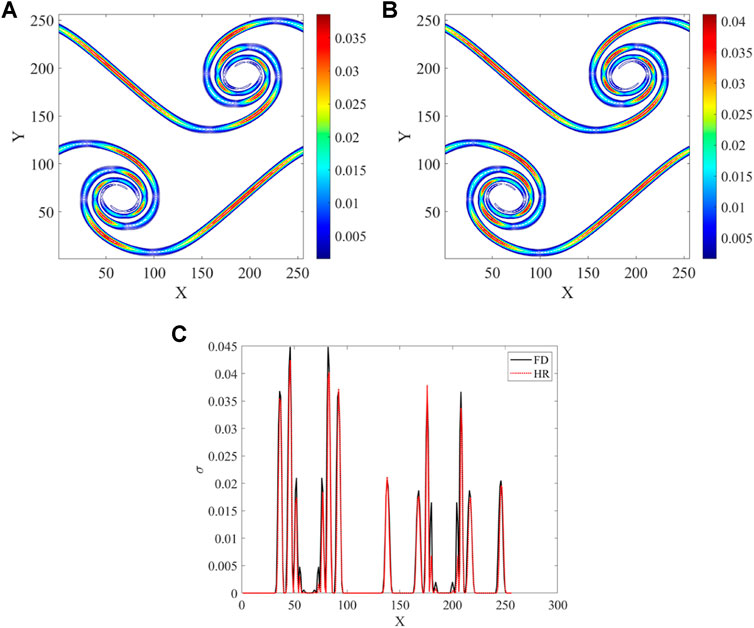
FIGURE 12. Filter coefficient contour plot in the double shear layer at
4.2.2.2 Test Case With Small Diffusion Coefficient
We now consider the case where the equation itself has a small diffusion coefficient. Here, the diffusion coefficient
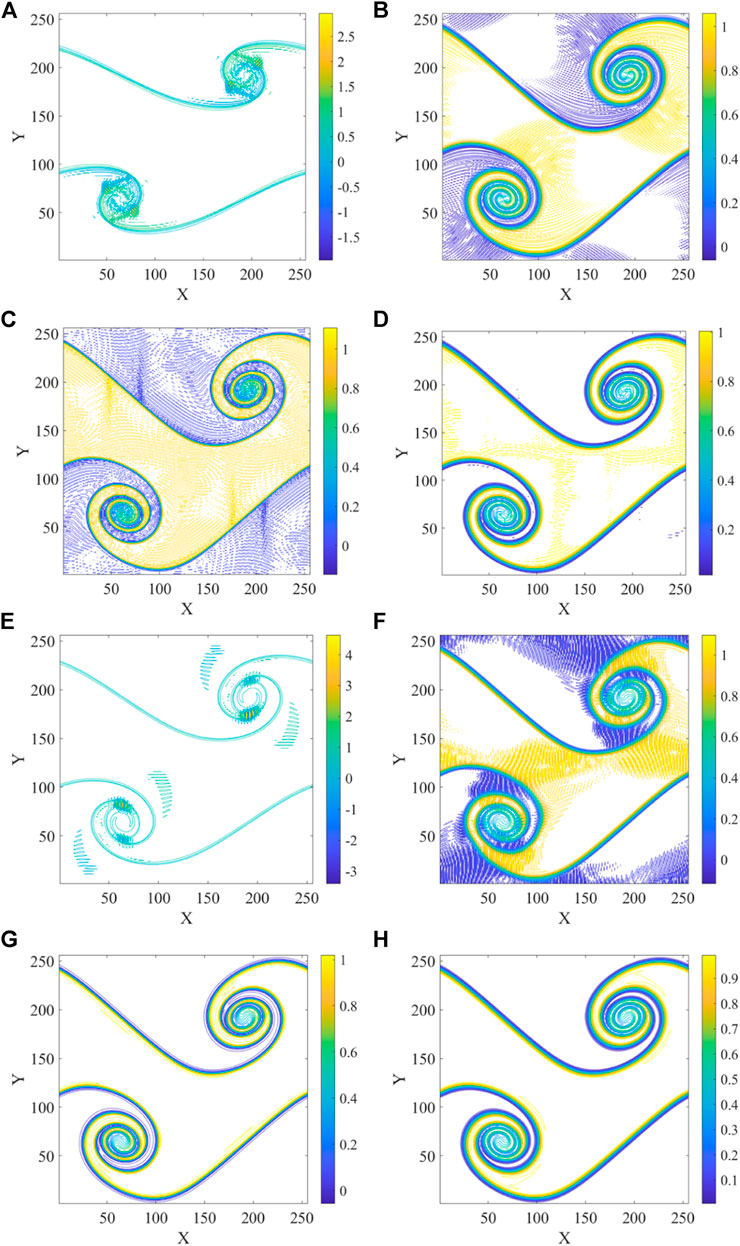
FIGURE 13. Unfiltered (left) and filtered (right) results at
For the results of the BGK collision operator, there are high-frequency oscillation waves in almost the entire computational domain. However, the simulation of the FD method and the LBM with PR1st collision operator cannot proceed to one convective time period, and the results tend to diverge. Figure 14 shows the scalar distribution along the counter-diagonal of the computational domain without and with filtering. It can be seen from Figures 14A,C that when the filtering method is not used, the result of LBM with the BGK collision operator has obvious numerical oscillations on the entire curve, while the result of HR collision operator only has a certain overshoot.
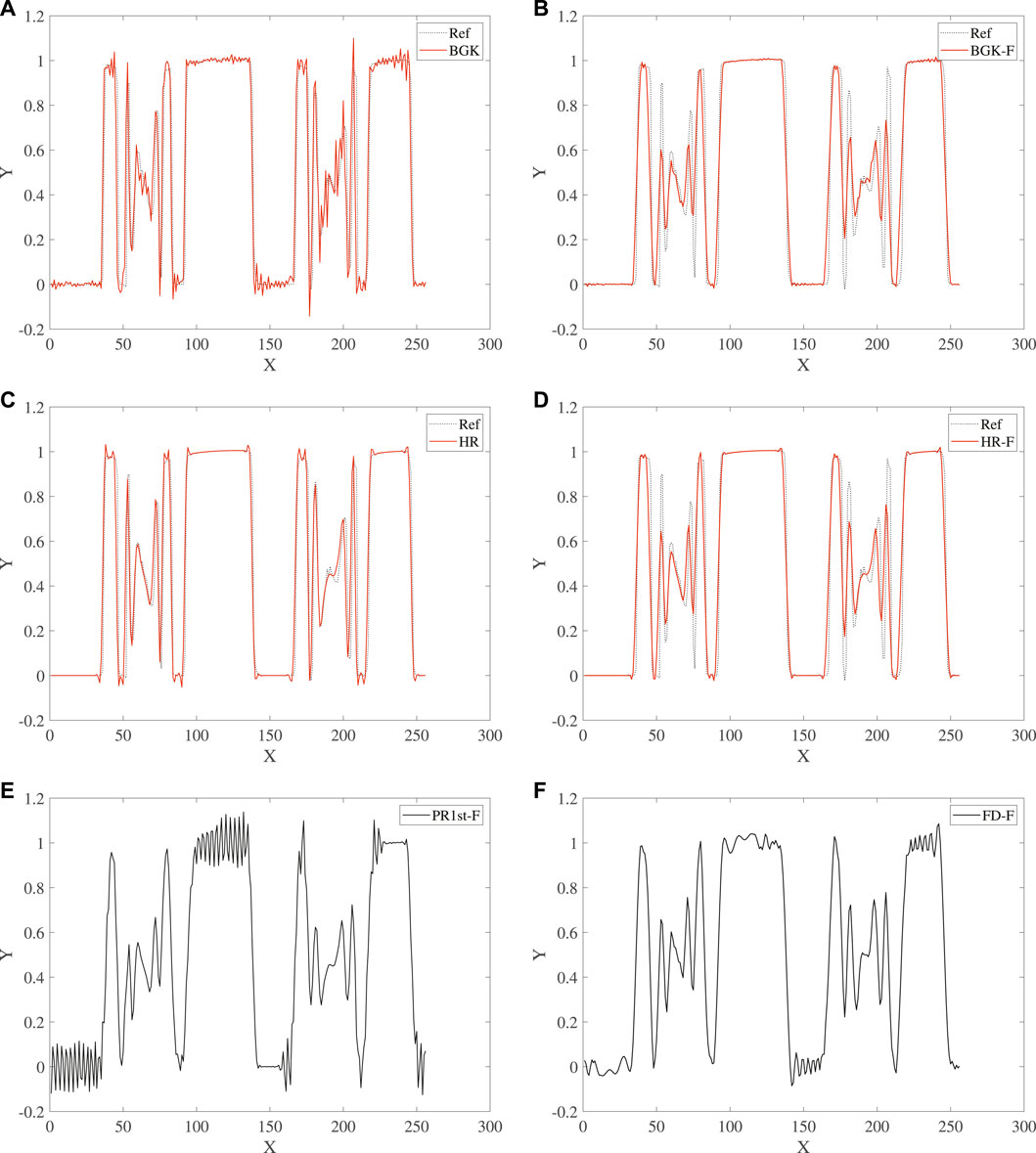
FIGURE 14. Scalar distribution profile at
After using the filtering method, the stability of both the FD method and the LBM has been improved. The right side of Figure 13 shows the contours of the scalar distribution calculated by the FD scheme and LBM with the filtering method. It can be seen that for the FD method and the PR1st collision operator, the filtering method significantly reduces the magnitude of the numerical oscillation. After using the filtering method, the simulation can be carried out for one convective time period without divergence, but there are still obvious numerical oscillations in the whole computational domain.
It can be seen from Figures 14E,F that when the filtering method is used, scalar distribution along the counter-diagonal of the computational domain of the FD method and the PR1st collision operator still have obvious numerical oscillations. Figures 14A,B show that, for the BGK collision operator, the filtering method can obviously suppress the high frequency oscillation in the computational domain, and a satisfactory result is obtained. For a quantitative measure of the error of BGK model with and without the filter, the scalar distribution along the counter-diagonal of the computational domain against a reference solution is compared. The L2 error of the unfiltered BGK model is
Figures 14C,D show that, for the HR collision operator, the filtering method suppresses the overshoot phenomenon near the region with high gradient and further reduces the amplitude of numerical oscillation. For the HR model with and without the filter, the scalar distribution along the counter-diagonal of the computational domain against a reference solution is compared. The L2 error of the unfiltered HR model is
Figure 15 shows the filter coefficients contour plot after using the filter with the FD method and LBM. It can be seen from the figure that for the BGK and HR collision operators the distribution of the filter coefficients is very smooth, and the filtering method only has an obvious effect in the scalar mixing region in the shear layer. This is principally because the scalar component distributions of the BGK and HR collision operators are relatively smooth. For the FD method and the PR1st collision operator, since there are obvious numerical oscillations in the computational domain, the filter coefficients also have obvious distributions in the flow region outside the shear layer.
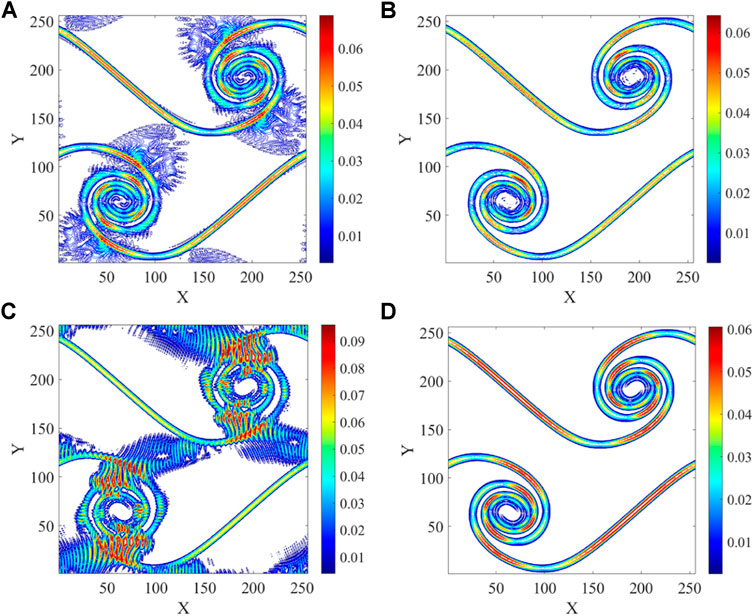
FIGURE 15. Filter coefficient contour plot in the double shear layer at
5 Conclusion
The advection-diffusion lattice Boltzmann models with BGK, PR1st, PR2nd and HR collision operators for scalar transport in uniform and complex flow are tested. In addition, an adaptive dynamic filtering method with a filter coefficient based on the gradient of the transport scalar is also tested. Mass and momentum conservation are addressed within a lattice Boltzmann flow solver, whereas the scalar conservation is addressed via the advection-diffusion lattice Boltzmann models. In the test of scalar transport in uniform flow, the LBM with PR2nd collision operator obtains almost the same result as the BGK collision operator, which both have significant errors when the diffusion coefficient is large in the test of Gaussian hill and have similar high frequency oscillation when the diffusion coefficient is small in the test of rectangular pulse. In its stability range, the accuracy of the PR1st collision operator is similar to that of the HR, but there will be serious numerical oscillation in the case of rectangular pulse with small diffusion coefficient. In the test of advective-diffusion in complex flow, we can see that, for the case with medium diffusion coefficient, the results of the LBM with the different collision operators are almost identical, and are basically consistent with the results of the FD scheme. However, when the diffusion coefficient is extremely small, the different collision operators and the FD scheme have different performances. The LBM with BGK collision operator can obtain a result with high-frequency oscillation waves in the domain. The simulation of the FD method and the LBM with PR1st collision operator cannot obtain stable results. The transport process of the scalar along the flow field can be simulated well by the LBM with HR collision operator. Introducing a local filter such as the one proposed in this study stabilizes the simulations of both LBM and FD scheme. Then for the simulation of high Péclet number flow, the dynamical filtering strategy should be seen as an enhanced stabilization procedure for the lattice Boltzmann method where the amount of numerical dissipation is locally controlled in space.
Data Availability Statement
The original contributions presented in the study are included in the article/Supplementary Material, further inquiries can be directed to the corresponding author.
Author Contributions
ZZ: Conceptualization, methodology, software, investigation, writing—original draft. ZL: Supervision, Methodology. YW: Supervision, writing—review and editing.
Funding
This work was supported by the Advanced Jet Propulsion Innovation Center, AEAC (Project ID. ZZCX-2020-004). The authors declare that this study received funding from AEAC, Aero Engine Academic of China, Aero Engine Corporation of China (AECC). The funder was not involved in the study design, collection, analysis, interpretation of data, the writing of this article or the decision to submit it for publication.
Conflict of Interest
Author YW was employed by company Aero Engine Academic of China, Aero Engine Corporation of China (AECC).
The remaining authors declare that the research was conducted in the absence of any commercial or financial relationships that could be construed as a potential conflict of interest.
Publisher’s Note
All claims expressed in this article are solely those of the authors and do not necessarily represent those of their affiliated organizations, or those of the publisher, the editors and the reviewers. Any product that may be evaluated in this article, or claim that may be made by its manufacturer, is not guaranteed or endorsed by the publisher.
References
1. Guo Z, Shu C. Lattice Boltzmann Method and its Applications in Engineering. Singapore: World Scientific (2013).
2. Huang H, Sukop M, Lu X. Multiphase Lattice Boltzmann Methods: Theory and Application. Oxford: John Wiley & Sons (2015).
3. Succi S. The Lattice Boltzmann Equation: For Complex States of Flowing Matter. Oxford: Oxford University Press (2018).
4. Fei L, Luo KH, Lin C, Li Q. Modeling Incompressible Thermal Flows Using a Central-Moments-Based Lattice Boltzmann Method. Int J Heat Mass Transf (2018) 120:624–34. doi:10.1016/j.ijheatmasstransfer.2017.12.052
5. Fattahi E, Farhadi M, Sedighi K, Nemati H. Lattice Boltzmann Simulation of Natural Convection Heat Transfer in Nanofluids. Int J Therm Sci (2012) 52:137–44. doi:10.1016/j.ijthermalsci.2011.09.001
6. Guo Z, Zhao TS. A Lattice Boltzmann Model for Convection Heat Transfer in Porous Media. Numer Heat Transf Part B Fundam (2005) 47(2):157–77. doi:10.1080/10407790590883405
7. Hosseini SA, Eshghinejadfard A, Darabiha N, Thévenin D. Weakly Compressible Lattice Boltzmann Simulations of Reacting Flows with Detailed Thermo-Chemical Models. Comput Math Appl (2020) 79(1):141–58. doi:10.1016/j.camwa.2017.08.045
8. Hosseini SA, Darabiha N, Thévenin D. Mass-Conserving Advection-Diffusion Lattice Boltzmann Model for Multi-Species Reacting Flows. Phys A Stat Mech its Appl (2018) 499:40–57. doi:10.1016/j.physa.2018.01.034
9. Dellar PJ. Bulk and Shear Viscosities in Lattice Boltzmann Equations. Phys Rev E Stat Nonlin Soft Matter Phys (2001) 64:031203. doi:10.1103/PhysRevE.64.031203
10. David C, Sagaut P. Structural Stability of Lattice Boltzmann Schemes. Phys A Stat Mech its Appl (2016) 444:1–8. doi:10.1016/j.physa.2015.09.089
11. Wissocq G, Sagaut P, Boussuge J-F. An Extended Spectral Analysis of the Lattice Boltzmann Method: Modal Interactions and Stability Issues. J Comput Phys (2019) 380:311–33. doi:10.1016/j.jcp.2018.12.015
12. Masset PA, Wissocq G. Linear Hydrodynamics and Stability of the Discrete Velocity Boltzmann Equations. J Fluid Mech (2020) 897. doi:10.1017/jfm.2020.374
13. Coreixas C, Wissocq G, Chopard B, Latt J. Impact of Collision Models on the Physical Properties and the Stability of Lattice Boltzmann Methods. Phil Trans R Soc A (2020) 378(2175):20190397. doi:10.1098/rsta.2019.0397
14. Hosseini SA, Coreixas C, Darabiha N, Thévenin D. Stability of the Lattice Kinetic Scheme and Choice of the Free Relaxation Parameter. Phys Rev E (2019) 99:063305. doi:10.1103/PhysRevE.99.063305
15. Wissocq G, Coreixas C, Boussuge JF. Linear Stability and Isotropy Properties of Athermal Regularized Lattice Boltzmann Methods. Phys Rev E (2020) 102(5):053305. doi:10.1103/PhysRevE.102.053305
16. Wissocq G, Sagaut P. Hydrodynamic Limits and Numerical Errors of Isothermal Lattice Boltzmann Schemes. J Comput Phys (2022) 450:110858. doi:10.1016/j.jcp.2021.110858
17. Renard F, Wissocq G, Boussuge J-F, Sagaut P. A Linear Stability Analysis of Compressible Hybrid Lattice Boltzmann Methods. J Comput Phys (2021) 446:110649. doi:10.1016/j.jcp.2021.110649
18. Suga S. Numerical Schemes Obtained from Lattice Boltzmann Equations for Advection Diffusion Equations. Int J Mod Phys C (2006) 17(11):1563–77. doi:10.1142/s0129183106010030
19. Hosseini SA, Darabiha N, Thévenin D, Eshghinejadfard A. Stability Limits of the Single Relaxation-Time Advection-Diffusion Lattice Boltzmann Scheme. Int J Mod Phys C (2017) 28(12):1750141. doi:10.1142/s0129183117501418
20. d’Humière D, Ginzburg I, Krafczyk Y, Lallemand P, Luo L. Multiple Relaxation Time Lattice Boltzmann Models in Three Dimensions. Philosophical Trans R Soc Lond. Ser A Math Phys Eng Sci (2002) 360(1792):437–51. doi:10.1098/rsta.2001.0955
21. Latt J, Chopard B. Lattice Boltzmann Method with Regularized Pre-collision Distribution Functions. Math Comput Simul (2006) 72(2-6):165–8. doi:10.1016/j.matcom.2006.05.017
22. Tosi F, Ubertini S, Succi S, Chen H, Karlin I. Numerical Stability of Entropic Versus Positivity-Enforcing Lattice Boltzmann Schemes. Math Comput Simul (2006) 72(2-6):227–31. doi:10.1016/j.matcom.2006.05.007
23. Malaspinas O, Sagaut P. Advanced Large-Eddy Simulation for Lattice Boltzmann Methods: The Approximate Deconvolution Model. Phys Fluids (2011) 23(10):105103. doi:10.1063/1.3650422
24. Ricot D, Marié S, Sagaut P, Bailly C. Lattice Boltzmann Method with Selective Viscosity Filter. J Comput Phys (2009) 228(12):4478–90. doi:10.1016/j.jcp.2009.03.030
25. Nathen P, Haussmann M, Krause MJ, Adams NA. Adaptive Filtering for the Simulation of Turbulent Flows with Lattice Boltzmann Methods. Comput Fluids (2018) 172:510–23. doi:10.1016/j.compfluid.2018.03.042
26. Marié S, Gloerfelt X. Adaptive Filtering for the Lattice Boltzmann Method. J Comput Phys (2017) 333:212–26. doi:10.1016/j.jcp.2016.12.017
27. Grad H. On the Kinetic Theory of Rarefied Gases. Comm Pure Appl Math (1949) 2(4):331–407. doi:10.1002/cpa.3160020403
28. Guo Z, Zheng C, Shi B. Discrete Lattice Effects on the Forcing Term in the Lattice Boltzmann Method. Phys Rev E Stat Nonlin Soft Matter Phys (2002) 65:046308. doi:10.1103/PhysRevE.65.046308
29. Li X, Shan X. Self-Consistent Force Scheme in the Discrete Boltzmann Equation. arXiv preprintarXiv:1812.10603 (2018).
30. Malaspinas O. Increasing Stability and Accuracy of the Lattice Boltzmann Scheme: Recursivity and Regularization. arXiv preprint arXiv:1505.06900 (2015).
31. Chopard B, Falcone JL, Latt J. The Lattice Boltzmann Advection-Diffusion Model Revisited. Eur Phys J Spec Top (2009) 171(1):245–9. doi:10.1140/epjst/e2009-01035-5
32. Wang L, Shi B, Chai Z. Regularized Lattice Boltzmann Model for a Class of Convection-Diffusion Equations. Phys Rev E Stat Nonlin Soft Matter Phys (2015) 92(4):043311. doi:10.1103/PhysRevE.92.043311
33. Coreixas C, Wissocq G, Puigt G, Boussuge JF, Sagaut P. Recursive Regularization Step for High-Order Lattice Boltzmann Methods. Phys Rev E (2017) 96(3):033306. doi:10.1103/PhysRevE.96.033306
34. Jonnalagadda A, Sharma A, Agrawal A. Onsager-Regularized Lattice Boltzmann Method: A Nonequilibrium Thermodynamics-Based Regularized Lattice Boltzmann Method. Phys Rev E (2021) 104(1):015313. doi:10.1103/PhysRevE.104.015313
35. Latt J, Chopard B, Malaspinas O, Deville M, Michler A. Straight Velocity Boundaries in the Lattice Boltzmann Method. Phys Rev E Stat Nonlin Soft Matter Phys (2008) 77(5):056703. doi:10.1103/PhysRevE.77.056703
36. Skordos PA. Initial and Boundary Conditions for the Lattice Boltzmann Method. Phys Rev E (1993) 48:4823–42. doi:10.1103/physreve.48.4823
37. Chai Z, Shi B. Multiple-Relaxation-Time Lattice Boltzmann Method for the Navier-Stokes and Nonlinear Convection-Diffusion Equations: Modeling, Analysis, and Elements. Phys Rev E (2020) 102(2):023306. doi:10.1103/PhysRevE.102.023306
38. Jacob J, Malaspinas O, Sagaut P. A New Hybrid Recursive Regularized Bhatnagar–Gross–Krook Collision Model for Lattice Boltzmann Method-Based Large Eddy Simulation. J Turbul (2018) 19(11-12):1051–76. doi:10.1080/14685248.2018.1540879
Keywords: lattice Boltzmann method, numerical stability, dynamic filter, passive scalar, dissipation
Citation: Zhang Z, Li Z and Wu Y (2022) Advection–Diffusion Lattice Boltzmann Method With and Without Dynamical Filter. Front. Phys. 10:875628. doi: 10.3389/fphy.2022.875628
Received: 16 February 2022; Accepted: 20 April 2022;
Published: 05 May 2022.
Edited by:
Lev Shchur, Landau Institute for Theoretical Physics, RussiaReviewed by:
Oleg Ilyin, Federal Research Center Computer Science and Control (RAS), RussiaChristophe Coreixas, Université de Genève, Switzerland
Copyright © 2022 Zhang, Li and Wu. This is an open-access article distributed under the terms of the Creative Commons Attribution License (CC BY). The use, distribution or reproduction in other forums is permitted, provided the original author(s) and the copyright owner(s) are credited and that the original publication in this journal is cited, in accordance with accepted academic practice. No use, distribution or reproduction is permitted which does not comply with these terms.
*Correspondence: Yunke Wu, YnVhYWFrZUBidWFhLmVkdS5jbg==
 Zhihong Zhang
Zhihong Zhang Zhiqiang Li1
Zhiqiang Li1